What Is Chiaroscuro? – A Renaissance Contrast Technique
What does chiaroscuro mean, and who invented chiaroscuro? Chiaroscuro in art is a technique used primarily in the genre of painting and was best demonstrated in the works of master artists such as Caravaggio, Peter Paul Rubens, and Leonardo da Vinci. But how did this technique emerge, and why is this method still relevant today? These are just a few questions we will be discussing below to help you fully understand the impact and importance of the technique, as well as its place in other art forms.
Mastering Contrast in Art: What Is Chiaroscuro?
What is chiaroscuro? The term chiaroscuro refers to a painting technique that is used to create a contrast between light and dark elements in an artwork. The technique includes the manipulation of light versus shadow (and a balance of both) to convey different moods. These moods enhance the visual experience of artwork and can provide a sense of three-dimensionality, depth, and volume.
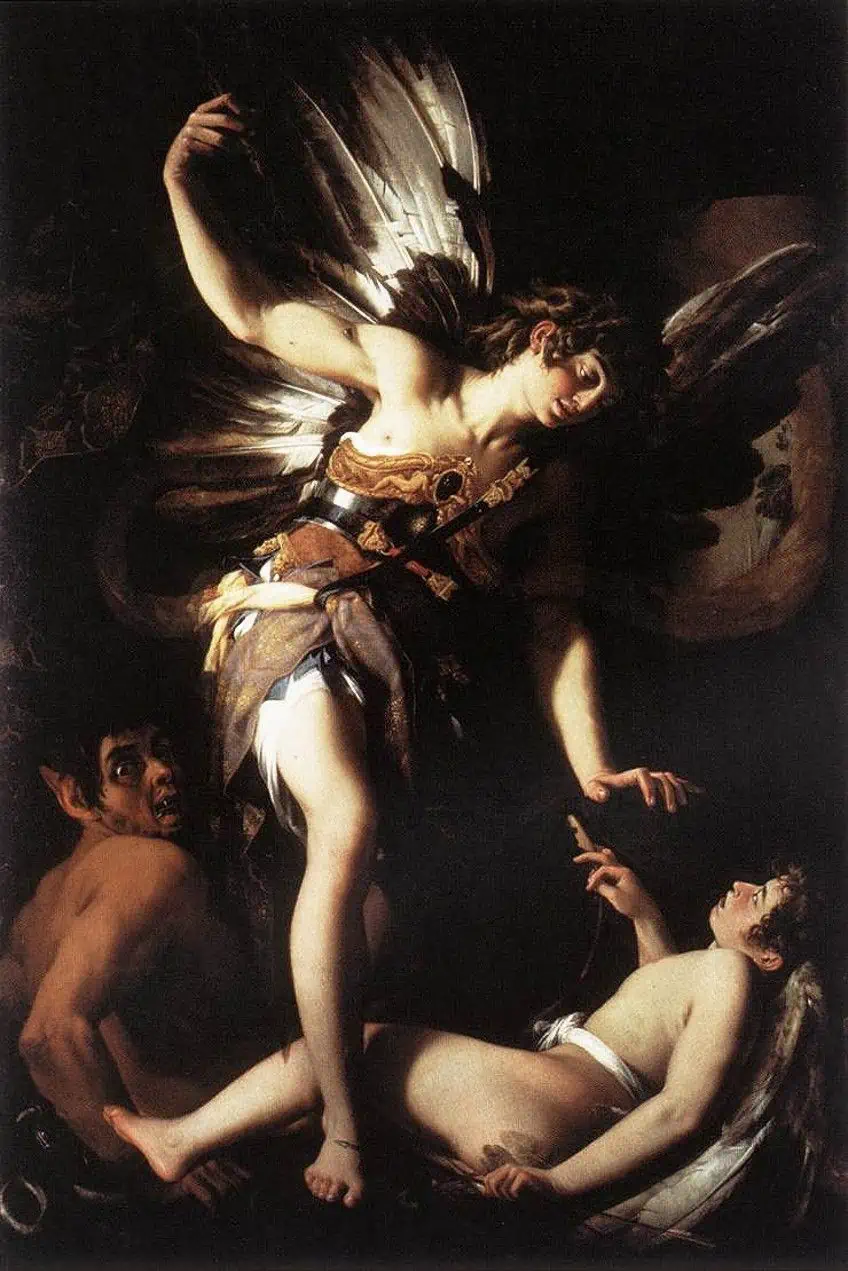
The chiaroscuro technique can be used strategically to create dramatic effects that leverage light and shadow to evoke an emotional response in the viewer. If you have ever looked at a painting and gasped at how mysterious or dramatic the scene seems, then you already have an idea of what the chiaroscuro technique looks and feels like in art. The technique evolved and was adopted as a visual language to convey different moods. Chiaroscuro effects can be seen in cinema and photography through black-and-white or low-key shooting methods.
Understanding the Significance of Chiaroscuro in Art History
What does chiaroscuro mean in the context of art history? The emergence of a technique that could be used in painting to achieve a sense of depth and drama also meant that Baroque and Renaissance artists had a new means to convey a sense of Realism while keeping up with the aesthetics of the day. The development of the chiaroscuro technique was significant in art history since it allowed others to create and reconstruct figures in painting with a higher sense of likeness to form. The technique, which was also used to create a sense of depth, was essential to artists who wanted to explore space and three-dimensionality in painting.
In art history, the technique enabled artists such as Rembrandt, Caravaggio, and even Leonardo da Vinci to harness the relationships between lightness and darkness and create works with a heightened sense of emotion and Realism.
Artists were also able to explore the balance between harsh illumination and deep shadows to bring their subjects and models to life while accentuating contours against darker backgrounds to build form. The importance of these experiments in form, depth, shape, tonal value, and light enabled extra visual elements that could guide the viewer’s eye across different focal points and encourage the exploration of composition. Over time, the chiaroscuro technique found a unique place in Baroque portraiture and invited a sense of introspection, psychological depth, and drama to traditional portraiture. Light and shadow are important elements in value that are also not only timeless in their visual impact but also pivotal in creating narratives that evoke emotion and stimulate the viewer’s senses.
A History of Chiaroscuro in Art: Origins
Where did chiaroscuro originate? How did this famous contrast technique emerge? And who invented chiaroscuro? The term “chiaroscuro” is an Italian word that translates to “light-dark” and is visually understood as a strong contrast in an artwork. The contrast between intense light and dark was first seen in Renaissance drawings, which were inspired by drawing techniques from late Roman Imperial era illuminated manuscripts. In an Italian art historical context, the term was also used to describe monochrome drawings or drawings where the artist used the paper’s tone as a base for incorporating ink and white gouache into the work to “draw” from the paper’s color itself.
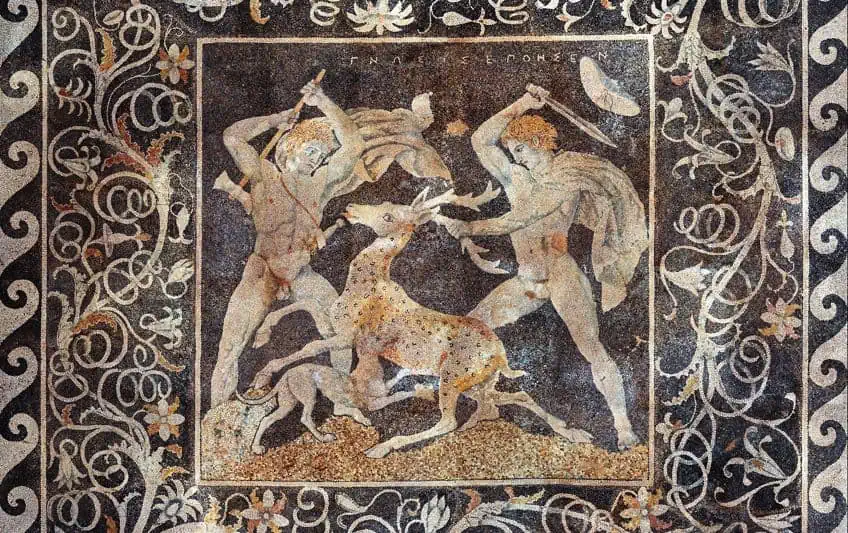
The modeling of light in drawing, painting, and art forms like printmaking is shaped by the value gradation of color and the division of light and shadow elements known as “shading”. Earlier techniques that were similar include the ancient Greek method called skiagraphia, also known as shadow painting, and was invented by Apollodoros in the 5th century BCE. Understandings of light and depth in art were also notable in mosaic works such as the Stag Hunt Mosaic (c. 4th century BCE) in Pella. The Byzantine period also featured crude forms of the chiaroscuro technique that was further improved in proto-Renaissance Europe and later expanded to the West.
The introduction of the technique in a formal sense was better attributed to Renaissance artist Leonardo da Vinci, who frequently explored the relationships between light and shadow. It is believed that Da Vinci popularized the technique’s foundations, which would influence later Renaissance painters. Da Vinci was invested in exploring the science behind the natural world and recognized that light had a powerful effect on the way objects were perceived.
He took particular interest in observations about the intensity and direction of light and strategically manipulated it to create a sense of depth, volume, and Realism in his works.
Da Vinci’s paintings had a profound impact on the Italian art community since his works conveyed a sculptural quality. At first, he received mixed reactions from art critics while many soon embraced the technique as a method to elevate the field of painting. The chiaroscuro technique was received with both praise and skepticism but became a widely adopted technique to display artistic mastery. Today, the technique encompasses all aspects of an artwork that showcase the strong contrast in shadow and illumination.
Tracing the Trajectory of Chiaroscuro in Art
The adoption and evolution of the chiaroscuro technique in art has a rich history based on the Renaissance, spread across different regions and periods. As discussed above, Renaissance artists such as Da Vinci, as well as Caravaggio, pioneered the technique and popularized it throughout Europe. The Baroque Age was a period in painting that fully embraced the technique and was best demonstrated in the works of Johannes Vermeer and Rembrandt, who evoked the drama of illumination.
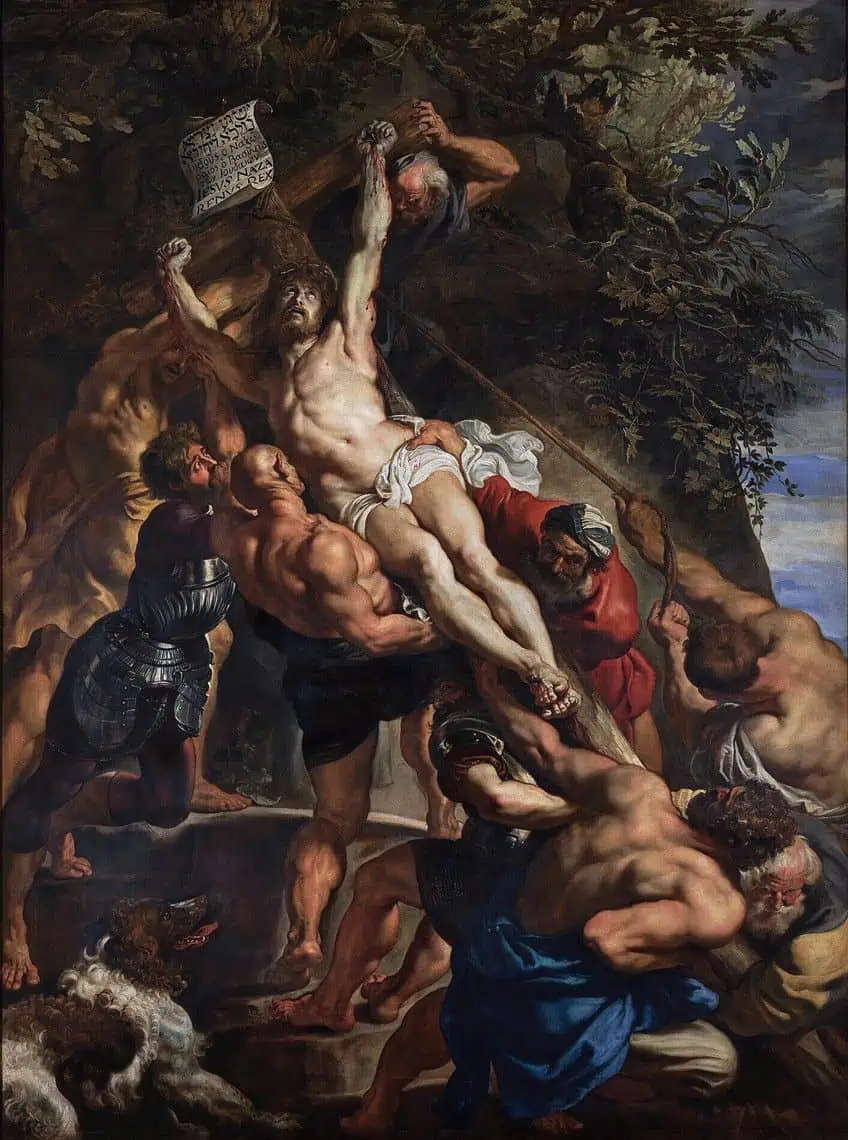
After the Renaissance, the chiaroscuro technique was made more soluble across different art movements and art forms, most notably in the age of Romantic art, where its qualities of evoking mood were leveraged to bring out the emotional aspect of Romanticism in landscape and historical painting. The 19th century saw artists of the Realism movement strive toward detailed representations of the natural environment while the proto-Modern Impressionists and modern post-Impressionists relied on light and its impact on color to convey scenes through the lens of the artist’s eye and perception of light.
The first half of the 20th century brought along distinct art styles rooted in Modernism and Contemporary art, which saw the use of the chiaroscuro technique in photography as well as introspection through atmospheric painting and strong black-and-white visual languages used to create new narratives around post-war and media art.
Figures such as Edward Hopper, Edward Weston, and George Tooker used chiaroscuro methods to create moody works filled with psychological tension, texture, form, and allegory to convey modern themes. Artists of the late-20th century who used chiaroscuro across figurative, abstract, realist, and photorealistic art include figures like Chuck Close, Anselm Kiefer, and Gerhard Richter whose works are all unique yet unforgettable in their visual impact.
Exploring Techniques and Applications of Chiaroscuro in Art
How do artists create the chiaroscuro effect, and how can chiaroscuro be used in art? Below, we will delve into the various techniques used by artists for creating chiaroscuro in art as well as how it has been used across art forms to create a sense of depth and mood.
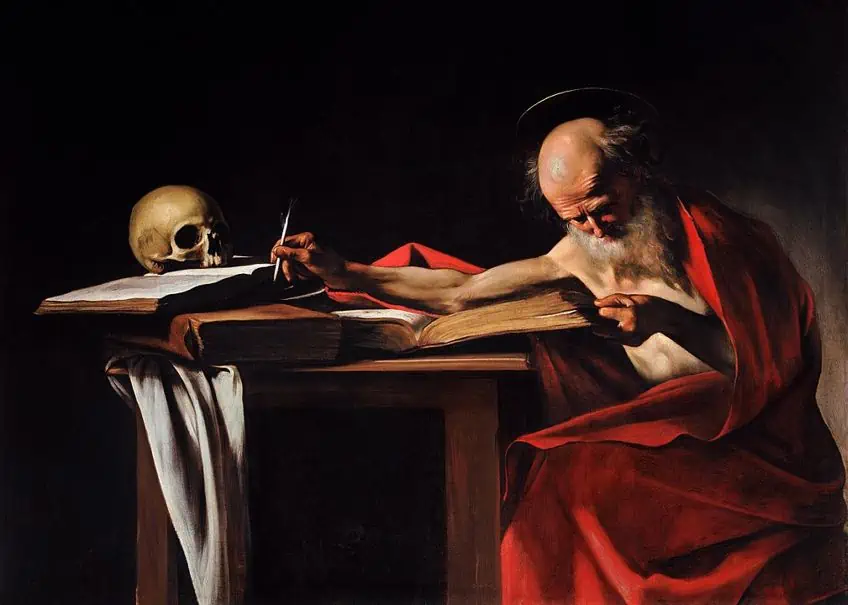
Popular Techniques to Create the Chiaroscuro Effect
In art, the impact of light and shadow on our perception of objects and forms is determined by the intensity and value range of the light and shadow aspects. A few popular techniques used to create the chiaroscuro technique include:
- Create stark contrasts: The chiaroscuro effect can be created by including stark contrasts between light and dark areas of your composition. Artists may render some areas with intense illumination and leave some areas with deep shadows.
- Apply the tenebrism painting method: Tenebrism is a similar technique that can be used to create a chiaroscuro Tenebrism was derived from the Italian term tenebroso, which translates to “dark” and was used to create a spotlight effect. This technique allows for a different type of illumination in contrast to chiaroscuro, which illuminates a subject. Tenebrism on the other hand illuminates a few areas in the painting to brighten the subject and appear as though the model is under a narrow spotlight.
- Use chiaroscuro drawing techniques: One can easily create chiaroscuro effects in drawing using hatching and cross-hatching techniques to create dense lines or strokes. These mark-making methods can be used to create shadows or lighter strokes to depict light. These drawing techniques are often used to create contrast in drawing and printmaking practices.
- Try sfumato: This technique, famously used by Leonardo da Vinci, involves creating a soft and gradual transition between light and shadow. By using delicate or subtle gradations of tone, artists can achieve a more soft and atmospheric rendition of chiaroscuro, that preserves volume while creating contrast.
- Explore glazing techniques: Artists can experiment with different glazes to achieve a luminous effect over lighter areas or selectively glaze areas with darker tones to create a chiaroscuro One can also try scumbling to create opaque layers over the dark sections for highlights and luminosity. By scumbling, one can adjust the value contrasts and add dimension.
- Manipulate available light sources: Whether you are painting or picking up a camera, you can also manipulate and adjust the available light sources (artificial or natural) to control the outcome of the composition. One can manage the distribution of light and shadow by adding or blocking light sources, such that the subject is prepared. You may also craft your own lightbox with a cardboard box by painting the interior black and cutting a small hole on the side of the box from which you will shine a light through. This is just one simple way that you can create still-life paintings or simple compositions using a controlled light structure.
- Incorporate reflective surfaces in the composition: Artists can generate material or textural contrast to evoke the chiaroscuro One can use the reflective properties of certain materials such as mirrors, silverware, or glass to add a reflective element that enhances the chiaroscuro effect.
Chiaroscuro Through the Art Forms
How can chiaroscuro be used in art? The chiaroscuro technique is applied to the art form in different ways to convey themes of intrigue, mystery, the sublime, drama, and psychological tension among the many moods and emotional effects it is capable of conveying. In painting, chiaroscuro can be used to not only create contrast but to enhance a subject’s depth, three-dimensionality, and volume. Artists can emphasize certain areas to direct the viewer’s gaze and set the desired tone or mood of the artwork. The placement of light sources is crucial to amplify the relationship between light and shadow. Chiaroscuro paintings such as Saint Jerome Writing (1605-1606) by Caravaggio and The Penitent Magdalene (c. 1640) by Georges de La Tour are excellent examples of how chiaroscuro had been used in the Renaissance to convey Christian-themed artwork that was embedded with metaphors and included explorations of illumination in their compositions.
In photography, chiaroscuro can be achieved through controlled lighting, including a fusion of natural and artificial light.
Photographers can evoke different emotions and convey particular narratives about the subject by using chiaroscuro to add dimensionality, texture, and depth while creating a sense of mystery and introspection. The visual effects are similar yet different in their textural quality to the painting. In photography, there is greater manipulation and control over creating chiaroscuro. When applied to film, chiaroscuro is created using low-key and high-contrast lighting to generate a visually striking and timeless image. In filmmaking, chiaroscuro can be used to narrow in on specific characters and create tension, suspense, and intrigue. Chiaroscuro enhances the overall visual aesthetic quality of the film by defining the tone and cinematic experience of the film for the viewer.

By establishing a contrast between the intensity of light and shadow, artists can evoke different emotions while setting the mood of a composition or scene. Soft lighting or sfumato effects can be used to evoke a sense of warmth, even without color while deep shadows inspire a sense of mystery and tension. By experimenting with colors in varying degrees of shadow and light, artists can develop clarity in their form. Chiaroscuro methods also give artists control over the emotional impact of the work by experimenting with the direction and intensity of light, which can evoke moods such as energetic, somber, and introspective. In establishing depth, chiaroscuro is useful since it can make objects appear farther or closer away and establish spatial depth. Such visual effects are best used in still-life and figurative works.
Chiaroscuro in the Contemporary Era
What is chiaroscuro in the Contemporary period? In the Contemporary era, chiaroscuro art has been applied both technically in terms of its medium and its relationship to conveying conceptual themes inspired by the intense contrast of light and shadow. Contemporary and 20th-century portraiture also adopted chiaroscuro through black and white photography to explore the structure of a sitter’s face or in film, to outline the character of the sitter. Today, many understand chiaroscuro as “high-contrast lighting” or in the visual arts as “Rembrandt lighting”.
In essence, the chiaroscuro technique is a tool for creating dramatic lighting effects that can be adopted across many mediums.
The moodiness of chiaroscuro still appeals to many and has had a profound impact on cinematography. Filmmakers such as Martin Scorsese have also mentioned that he drew from Caravaggio’s works and the renowned Caravaggesque style to inspire visuals in many of his films. Contemporary topics found in chiaroscuro art include themes of Nihilism, loneliness, existentialism, Surrealism, and hyperrealism presented in visually mesmerizing ways.
Modern chiaroscuro artworks that fuse chiaroscuro with their concept include works such as Time of War 3 and Time of War 13 (2012) by Olivier Valsecchi, who used chiaroscuro in photography to explore themes of death, rebirth, and maternity. He also explored the use of Klecksography in his practice to evoke the symmetry of the human body as it intertwines with another. Artists such as Jesse Lane also employed chiaroscuro and the Caravaggesque style to inform hyper-realistic chiaroscuro paintings like Echoes (2016), which are not only technically exquisite but also create room for open-ended interpretation.
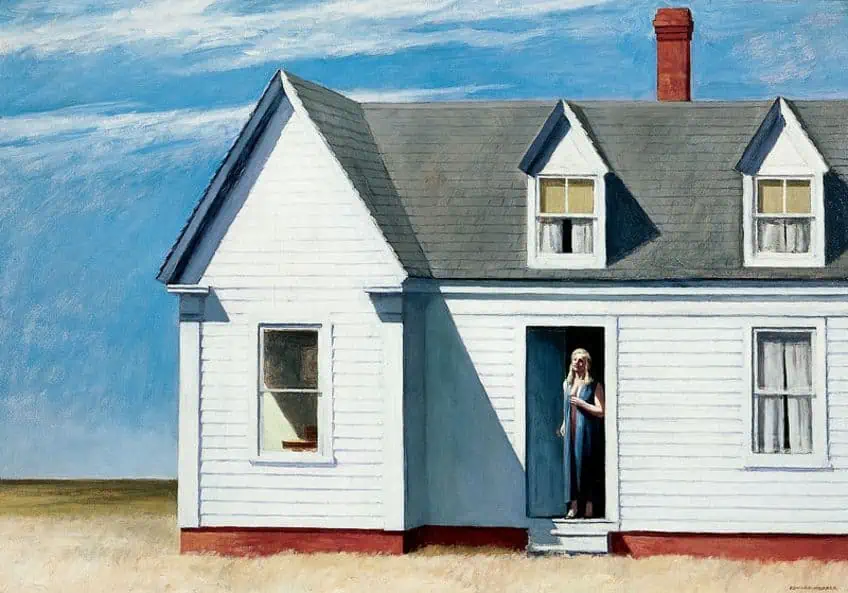
Techniques such as the chiaroscuro method continue to serve as a source of inspiration and a clear visual language that is used to narrate and express a range of emotions. The flexibility of high-contrast visuals is also relevant in the 21st century since the themes of light and dark continue to thrive as a timeless narrative. The chiaroscuro effect is useful in exploring duality, form, character, and the nuances of what is shown and what is hidden as well as what is censored and what is clarified.
When creating your chiaroscuro-based artwork, it is important to ponder over what you are trying to hide and what you wish to illuminate. In doing so, the process and methods required become much easier. Chiaroscuro effects can convey a variety of moods and emotions, and remain an important aspect of portraiture, photography, and filmmaking in the 21st century.
Frequently Asked Questions
What Is Chiaroscuro?
The term chiaroscuro is an Italian word used to describe a visual technique that is used to create a sense of intense contrast between the light and shadow areas of artwork. Chiaroscuro is an effect that is used in different art forms and is used primarily to achieve a sense of dramatic mood or three-dimensionality.
Who Invented Chiaroscuro?
The chiaroscuro painting technique was developed by artists such as Leonardo da Vinci and Caravaggio. Da Vinci is credited with exploring the technique and its properties concerning the effects of light on objects in drawing, while Caravaggio is also credited with pioneering a unique style of chiaroscuro painting called the Caravaggesque style with followers who call themselves Caravaggisti artists.
How Can Chiaroscuro Be Used in Art?
In the visual arts, chiaroscuro can be used to create strong visual juxtapositions between light and dark elements. Additionally, it can be used to enhance an artwork’s three-dimensional quality while adding depth, volume, and a sense of tension and drama to an artwork. Throughout history, chiaroscuro has been used to depict form, define a sense of space, and evoke emotions. The effect has been used in multiple art forms, including painting, drawing, photography, and sculpture to add texture or express a sense of realism.
Liam Davis is an experienced art historian with demonstrated experience in the industry. After graduating from the Academy of Art History with a bachelor’s degree, Liam worked for many years as a copywriter for various art magazines and online art galleries. He also worked as an art curator for an art gallery in Illinois before working now as editor-in-chief for artfilemagazine.com. Liam’s passion is, aside from sculptures from the Roman and Greek periods, cave paintings, and neolithic art.
Learn more about Liam Davis and about us.
Cite this Article
Liam, Davis, “What Is Chiaroscuro? – A Renaissance Contrast Technique.” artfilemagazine – Your Online Art Source. October 3, 2023. URL: https://artfilemagazine.com/what-is-chiaroscuro/
Davis, L. (2023, 3 October). What Is Chiaroscuro? – A Renaissance Contrast Technique. artfilemagazine – Your Online Art Source. https://artfilemagazine.com/what-is-chiaroscuro/
Davis, Liam. “What Is Chiaroscuro? – A Renaissance Contrast Technique.” artfilemagazine – Your Online Art Source, October 3, 2023. https://artfilemagazine.com/what-is-chiaroscuro/.



